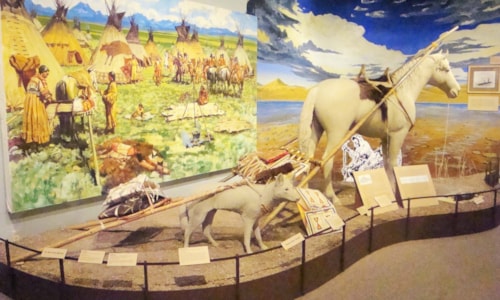Bannack
On July 28, 1862, a group of “Pikes Peakers” from the gold fields of Colorado set up camp on the banks of the grasshopper infested Willards Creek in what is now Southwestern Montana. The miners found gold in the creek and quickly staked claims, redubbing the stream “Grasshopper Creek.” Like all miners, they tried to keep their find a secret and, like all miners, they failed. By fall, the settlement had swollen to four hundred, many of them unprepared and ill-equipped for the harsh mountain winter. The town fathers christened the town “Bannack” after the Bannock Indians that lived in the region, and by the spring of 1863, the area boasted a population of five thousand.
The sudden wealth attracted all manner of robbers and road agents, and the residents of Bannack elected Henry Plummer to serve as sheriff. The lawlessness intensified. Rumors spread that a highly secretive and well-organized gang-perhaps led by Plummer and containing as many as one hundred men-was responsible for thousands of dollars and many lives lost in hold ups and robberies all over the area. In December of 1863, a group of town leaders secretly met in Virginia City and formed the “Vigilance Committee” with the purpose of establishing order in the area. Over the next few weeks, these legendary Vigilantes unleashed “the deadliest episode of vigilante justice in American history.”1 The Vigilantes convicted and executed-in kangaroo courts-some twenty two individuals, including Henry Plummer in Bannack.
A few months later, Montana became a U.S. Territory, with Bannack as its capital and Sidney Edgerton, one of the foremost Vigilantes, its first governor. However, Bannack's star was already in the decline. The gold fields of Alder Gulch and Last Chance Gulch proved larger and longer lasting and, in 1865, the Territorial capital moved to Virginia City. The railroad sealed Bannack's fate when, in the 1880s, it built a spur line to Dillon, bypassing Bannack entirely. By the 1960s, Bannack had become a thoroughly abandoned ghost town, and the state of Montana took over the town and began administering it as a state park. Although neither the first nor largest gold find in Montana, nevertheless Bannack remains, in the words of Lora Anderson-Gale “the door through which the world rushed into Montana.”2
1 Montana: The Magazine of Western History, Fall 2004
2 Bannack State Park Executive Summary & Management Plan: public review draft (2000)







